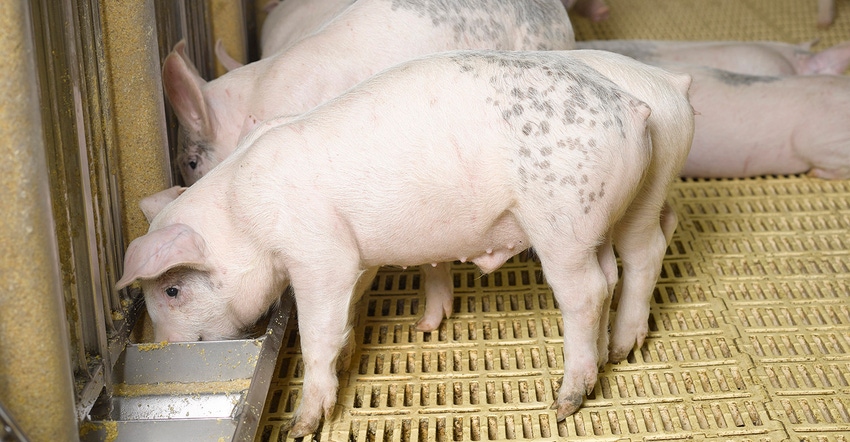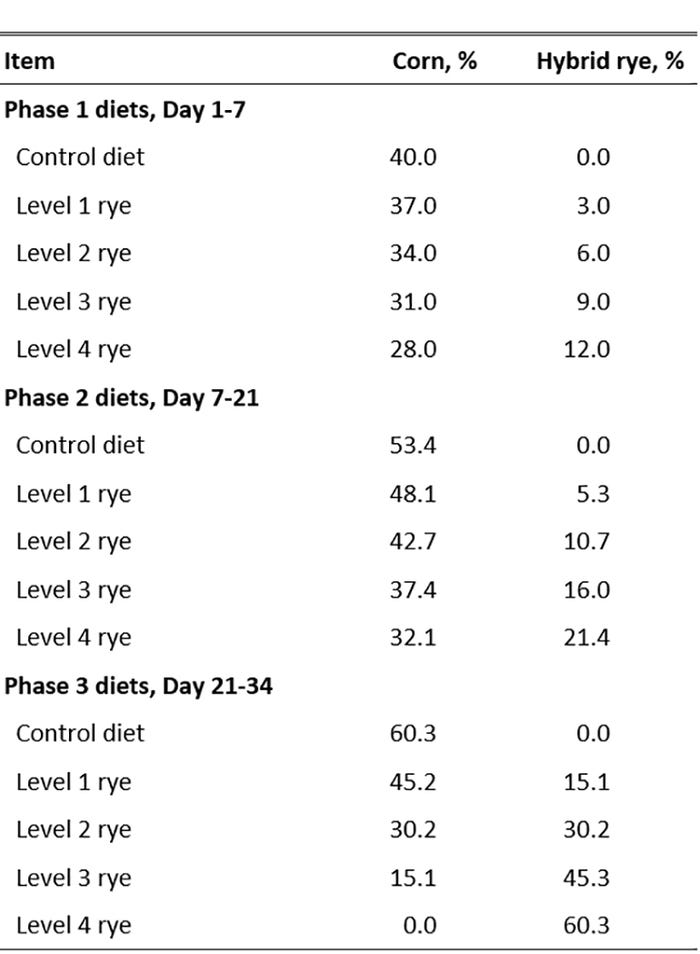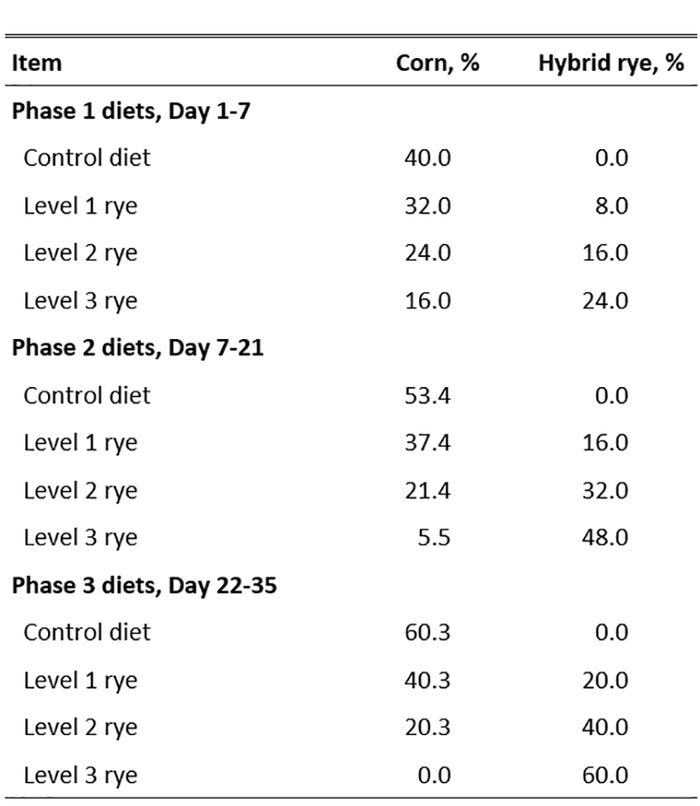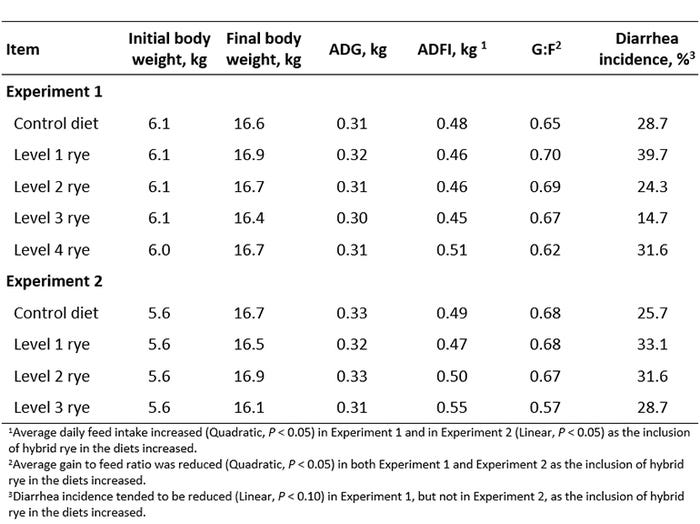Hybrid rye instead of corn does not impede nursery pig growth
Inclusion of hybrid rye in diets for weanling pigs did not change average daily gain or incidence of diarrhea compared with pigs fed corn-based diets.
April 30, 2020

Production of hybrid rye in North America is increasing since its introduction to Canada in 2014 and the United States in 2016. Hybrid rye's ability to out-yield and survive environmental stress better than other small grains makes it a great crop to add in a rotation. Hybrid rye can also be particularly valuable for farms in the outskirts of the Corn Belt where sandier, drier soils may prevent maximum corn yield. Although the current market for hybrid rye is quite small relative to other crops, recently conducted research supports the notion that it is suitable feed ingredient for pigs in North America.
Compared with corn, hybrid rye contains similar amounts of digestible amino acids, a greater concentration of digestible phosphorus and approximately 94% of the metabolizable energy in corn. Hybrid rye also contains more fermentable dietary fiber than corn, which has the potential to improve gut health. At the same time though, the question if the elevated indigestible protein compromises the health of the large intestine of nursery pigs needed to be addressed. Therefore, two experiments were conducted to determine the maximum amount of hybrid rye that can be included in diets for weanling pigs without influencing growth or diarrhea incidence.
In the first experiment, 160 pigs were allotted on the day of weaning (approximately 20 days of age) to five dietary treatments. Diets were formulated so that the inclusion rate of hybrid rye in each diet increased at the expense of corn alone, and therefore, dietary energy decreased as rye inclusion increased. (Table 1). The pigs were fed in a five-week, three-phase feeding program, and the proportion of rye in the diet was stepped up in each subsequent phase. Results demonstrated that there were no differences in body weight nor average daily gain at any point during the experiment (Table 3).

During Phase 3, a quadratic response was observed for average daily feed intake, because pigs fed diets with 100% hybrid rye replacement for corn consumed the most feed. The observed increase in feed intake was likely a result of the lower energy in hybrid rye compared with corn. Consequently, feed efficiency in Phase 3 and overall was also reduced (quadratic effect). Diarrhea incidence decreased with 6% and 9% hybrid rye inclusion in Phase 1, but no other differences were observed for the incidence of diarrhea during the experiment.
Based on these results, a second experiment was conducted to determine if greater inclusion rates of hybrid rye could be fed after weaning without causing a depression in growth (Table 2). Four dietary treatments were tested in the second experiment, and weanling pigs were again fed for five weeks in a three-phase feeding program. Results indicated that there was an increase in ADG in Phase 1 as the inclusion of hybrid rye increased, but there were no other differences in body weights or ADG during the experiment (Table 3).


Feed intake increased during Phase 1, Phase 3 and overall as hybrid rye was added to the diets. Thus, G:F was negatively impacted by inclusion of hybrid rye in the diet. No differences in average fecal scores nor diarrhea incidence were observed, but it should be noted that both groups of nursery pigs were of high health status. More prominent effects of hybrid rye may be elicited when pigs are raised under the increased stress of commercial conditions.
Based on the results from the two experiments it is concluded that nursery pigs can tolerate up to 24%, 48% and 60% hybrid rye in phase 1, 2 and 3 diets, respectively, without exhibiting any reduction in growth. As hybrid rye is added to diets, pigs consume more feed, likely as a result of hybrid rye's reduced metabolizable energy compared with corn, so G:F is expected to be reduced when nursery pigs are fed hybrid rye.
In the first experiment, inclusion of hybrid rye at up to 9% in Phase 1 nursery diets appeared to have a positive effect on reducing diarrhea, but there were no observable differences in fecal scores or diarrhea incidence in the second experiment. Overall, feeding hybrid rye to these nursery pigs did not cause any problems in terms of observed health and growth performance.
Sources: Molly McGhee and Hans H. Stein, who are solely responsible for the information provided, and wholly own the information. Informa Business Media and all its subsidiaries are not responsible for any of the content contained in this information asset.
You May Also Like



